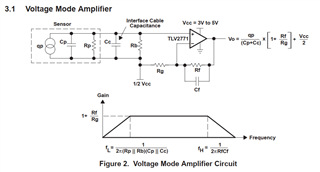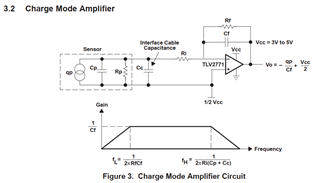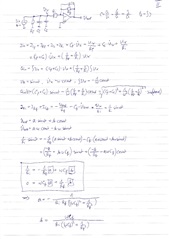Other Parts Discussed in Thread: TINA-TI
Hello everyone, I'm having a school project which is relevant to the piezo sensor. When I read the 'Signal Conditioning for Piezo Sensor", I have some confusing problem that hopes everyone can help my to solve.


I do not understand why the bandwidth frequency response of those circuits. For Figure 2, I do not how the feedback capacitor and resistor at this point form a low-pass filter that makes the higher cutoff frequency.
I also do not understand how we get the bandwidth of the figure 3 circuit.
I'm just a newbie so I hope someone can help me to answer. I very much appreciate each contributed comment
Thank you a lot.
Sincerely.




